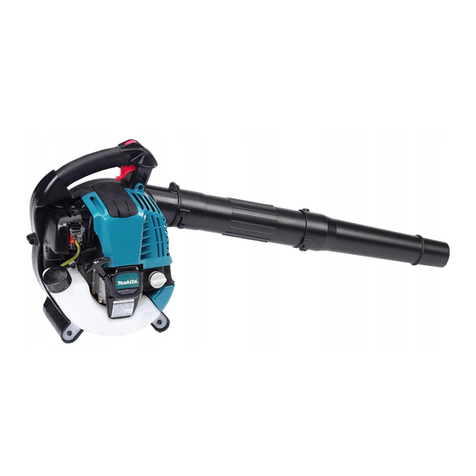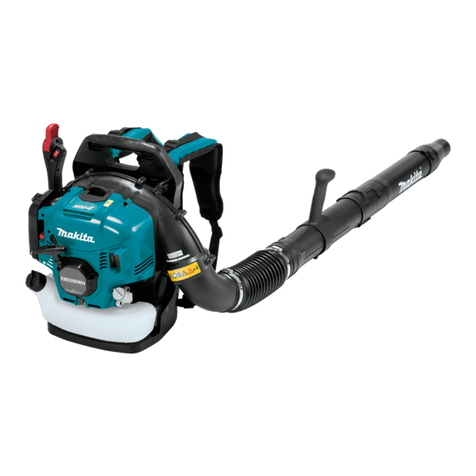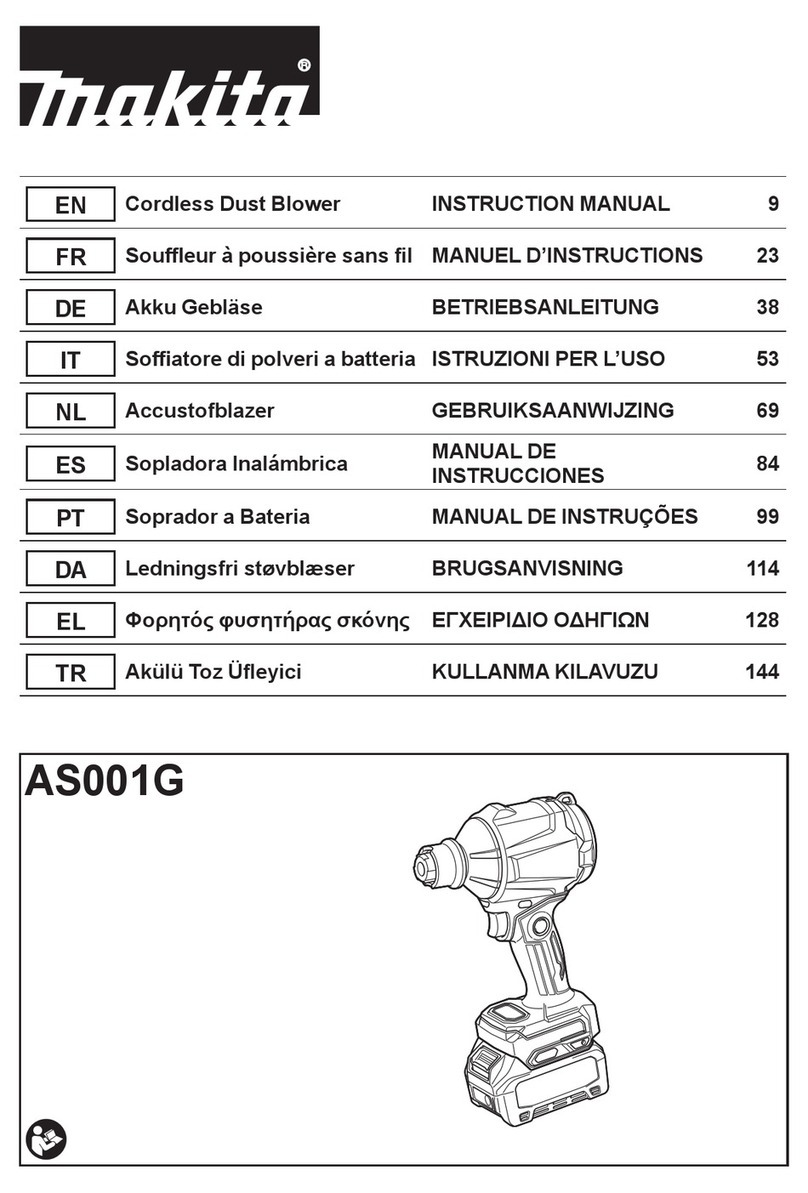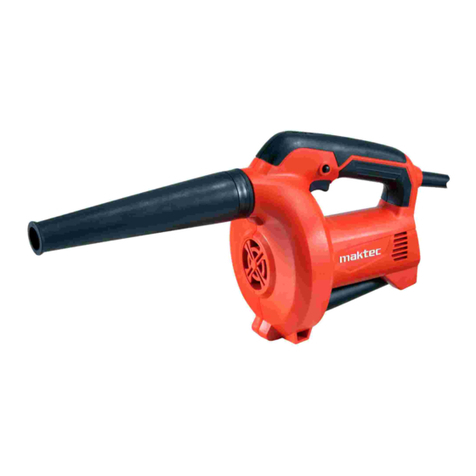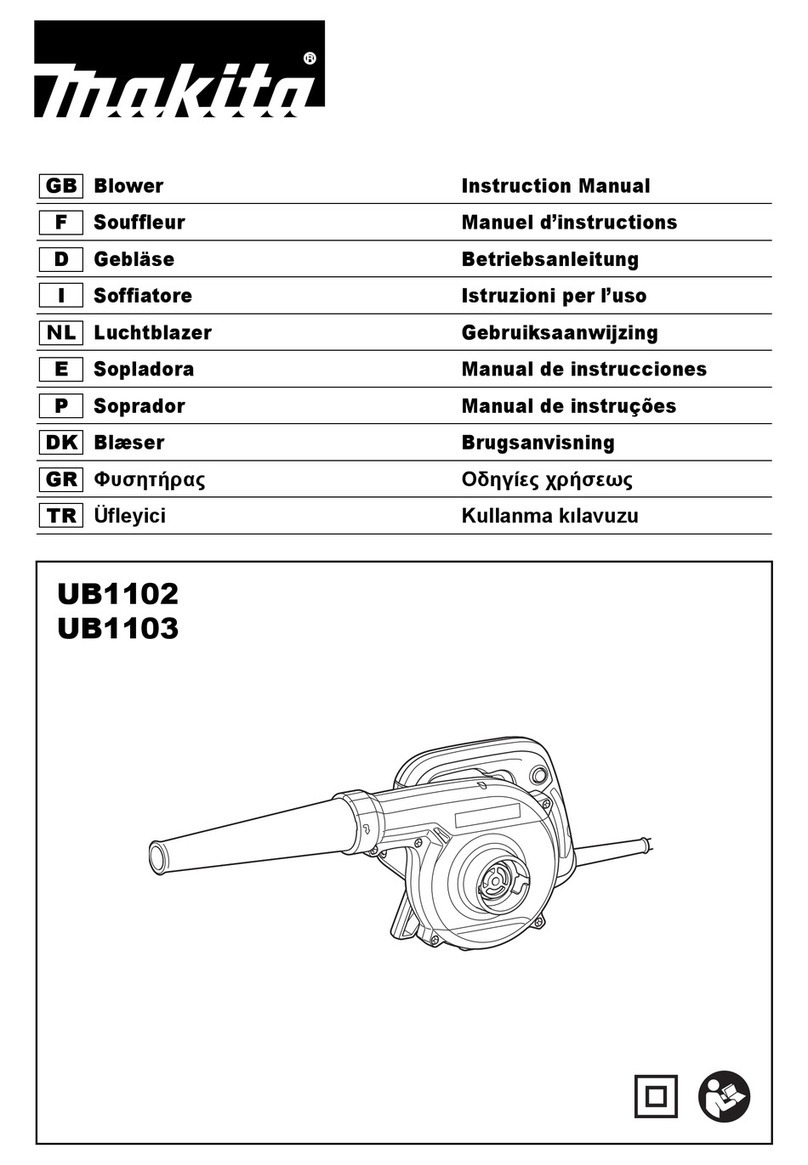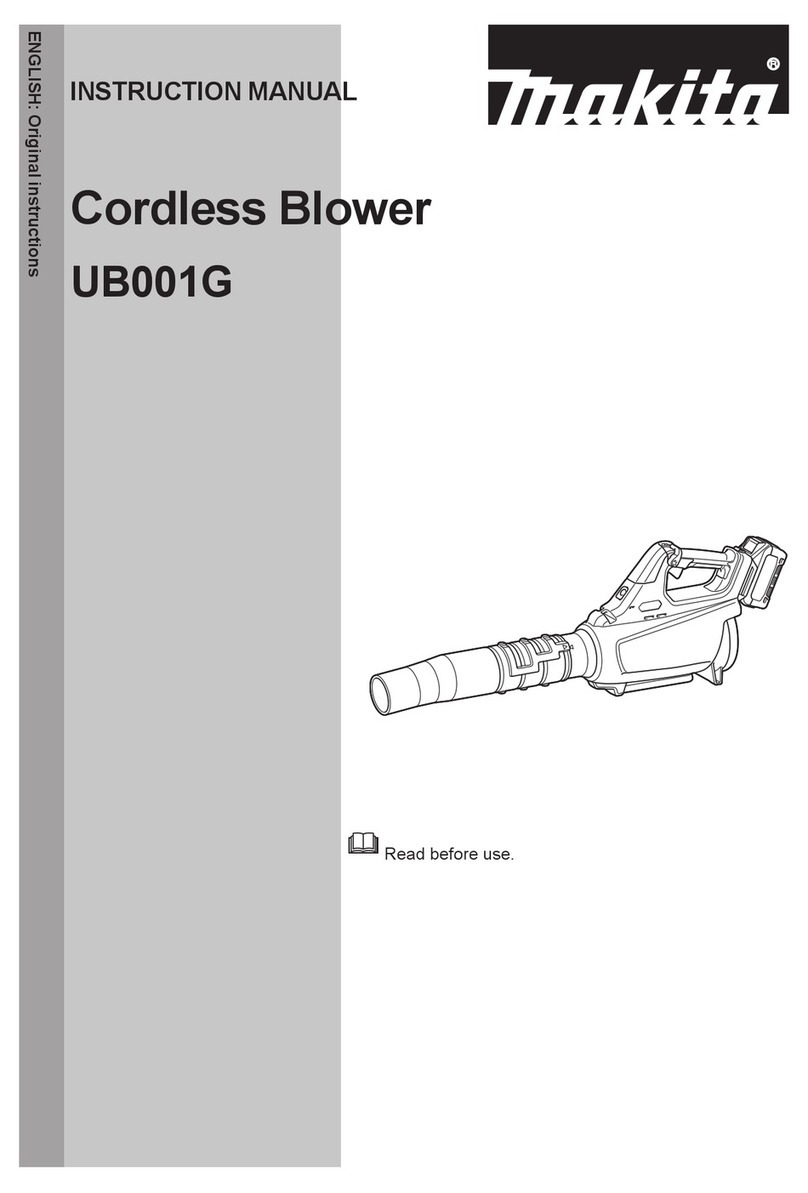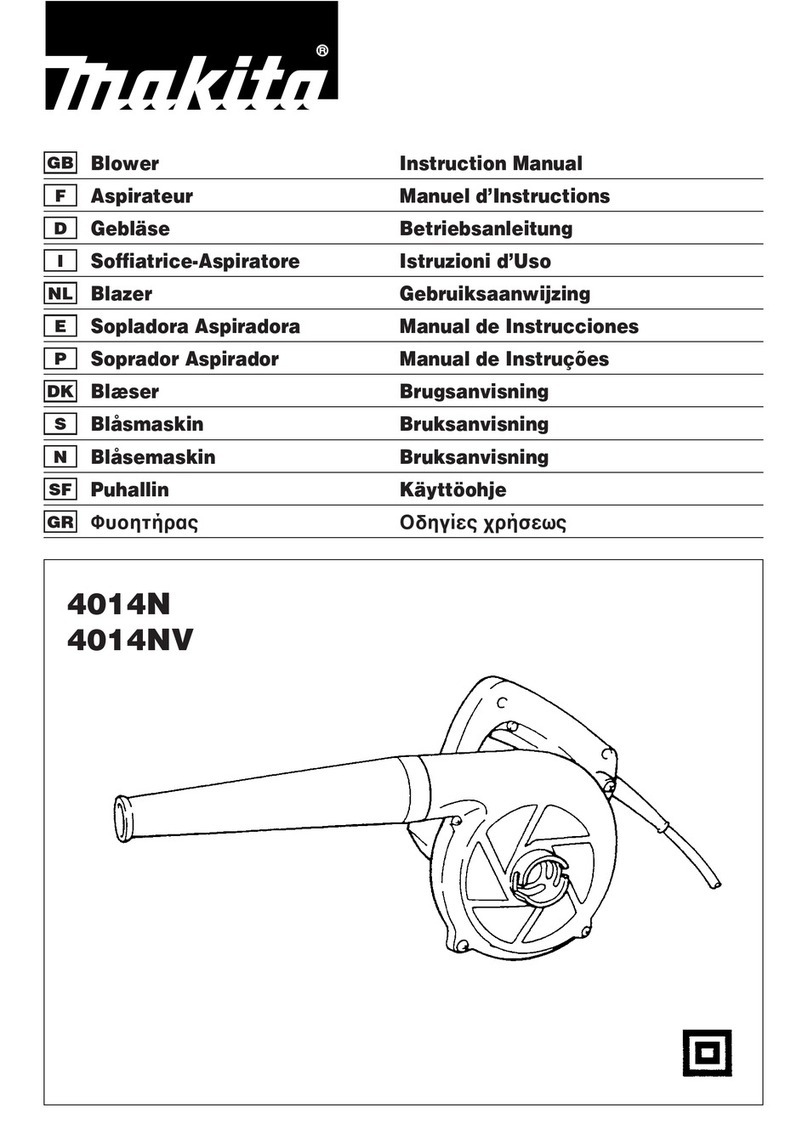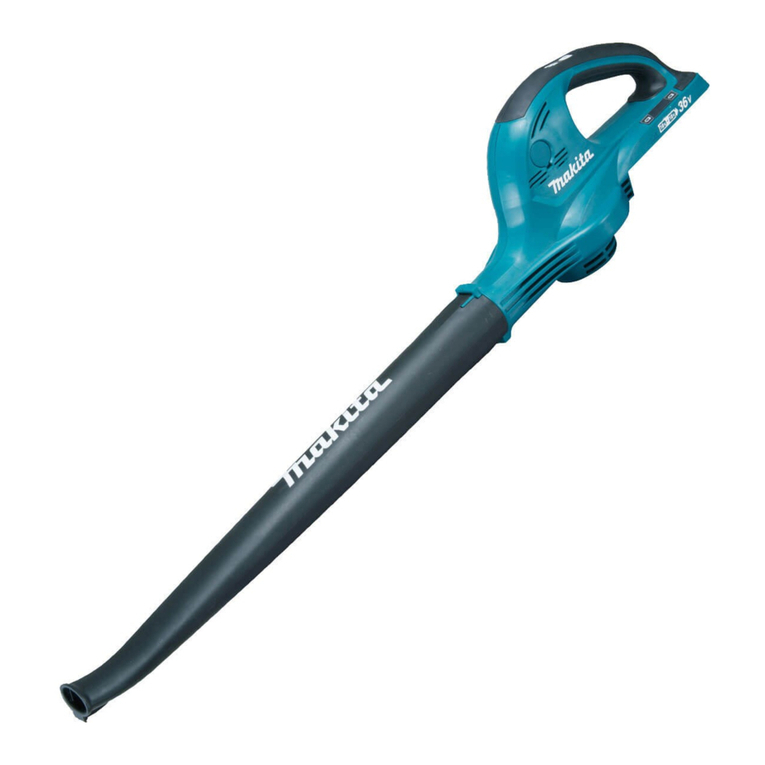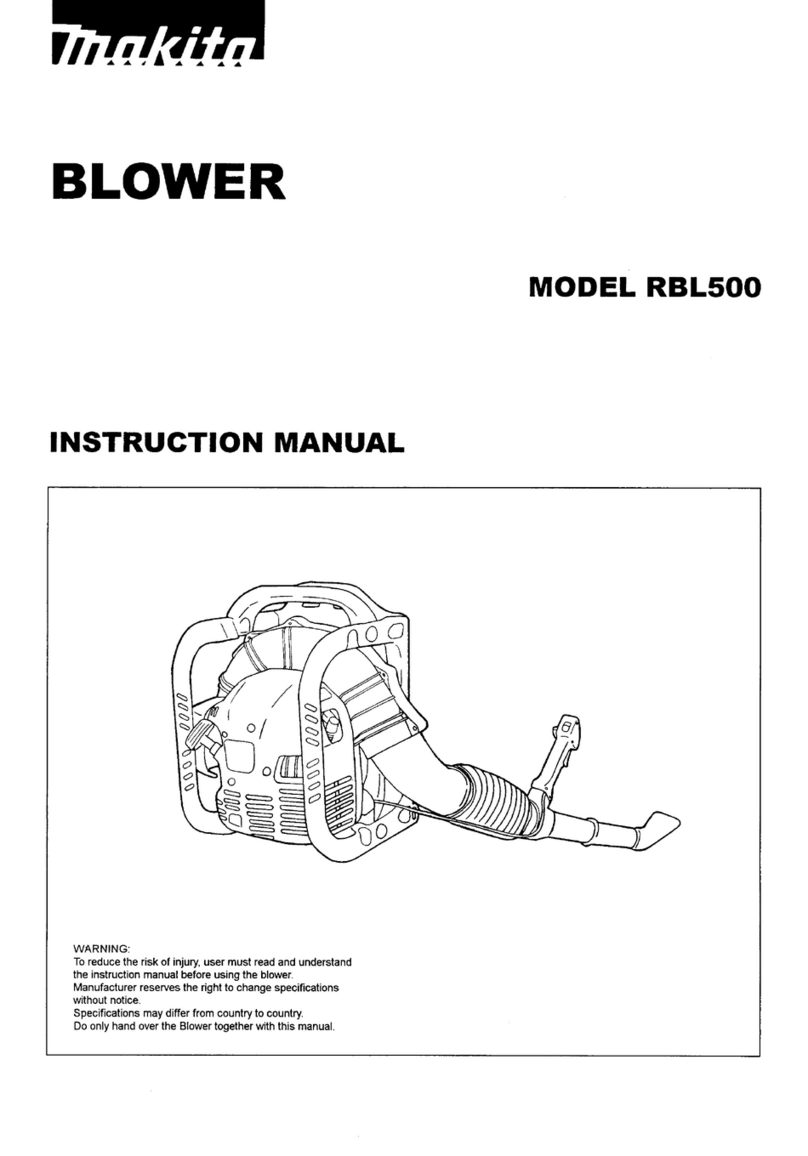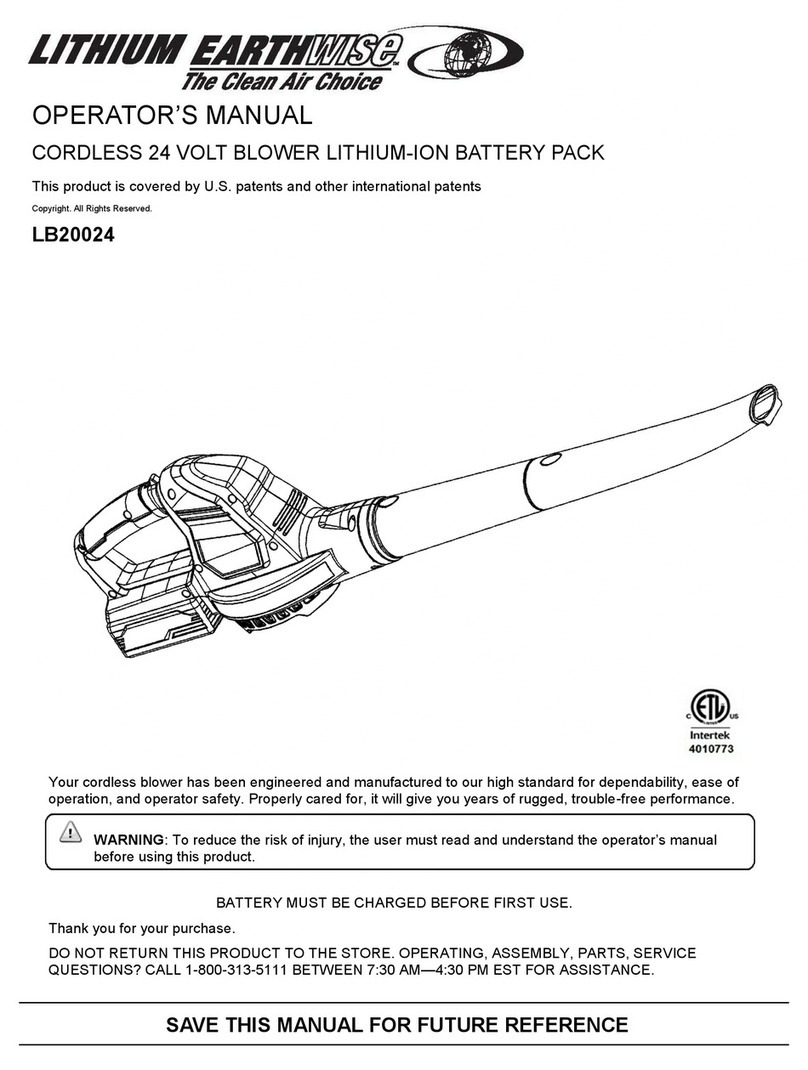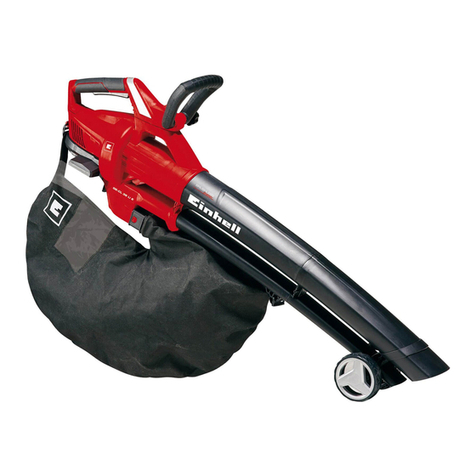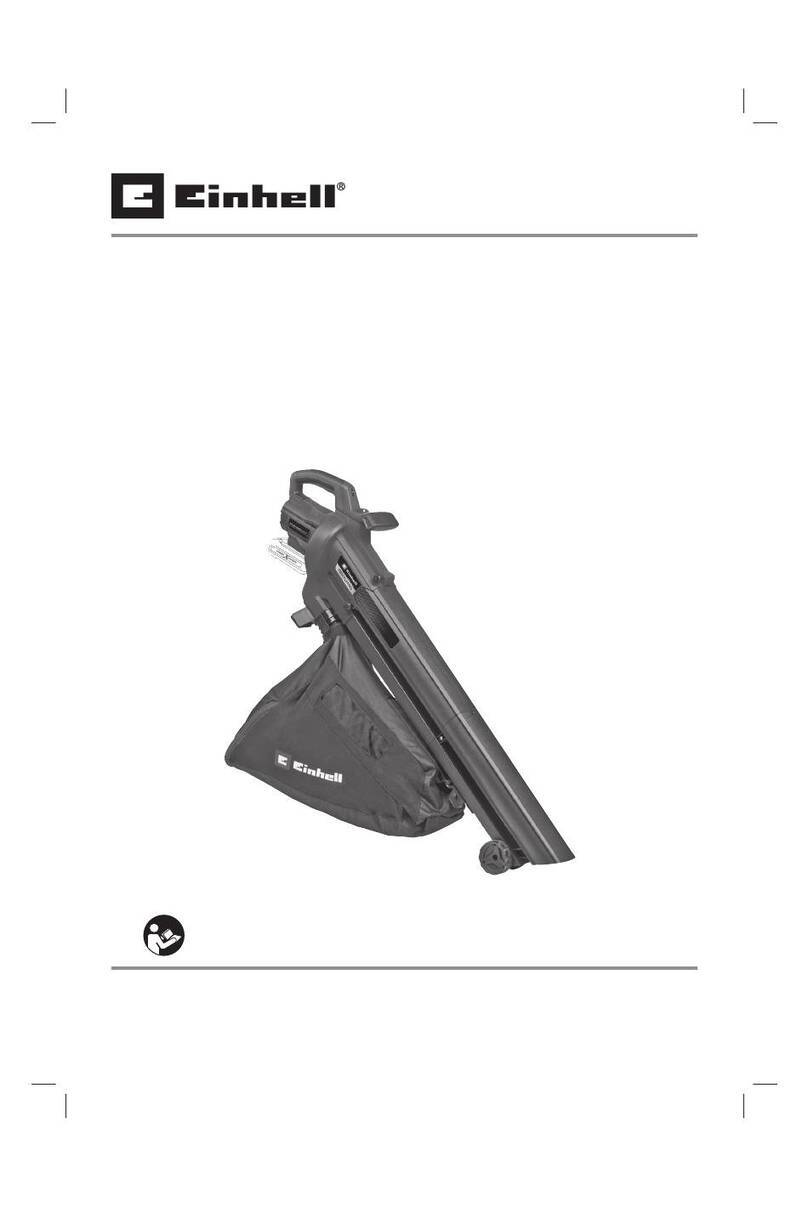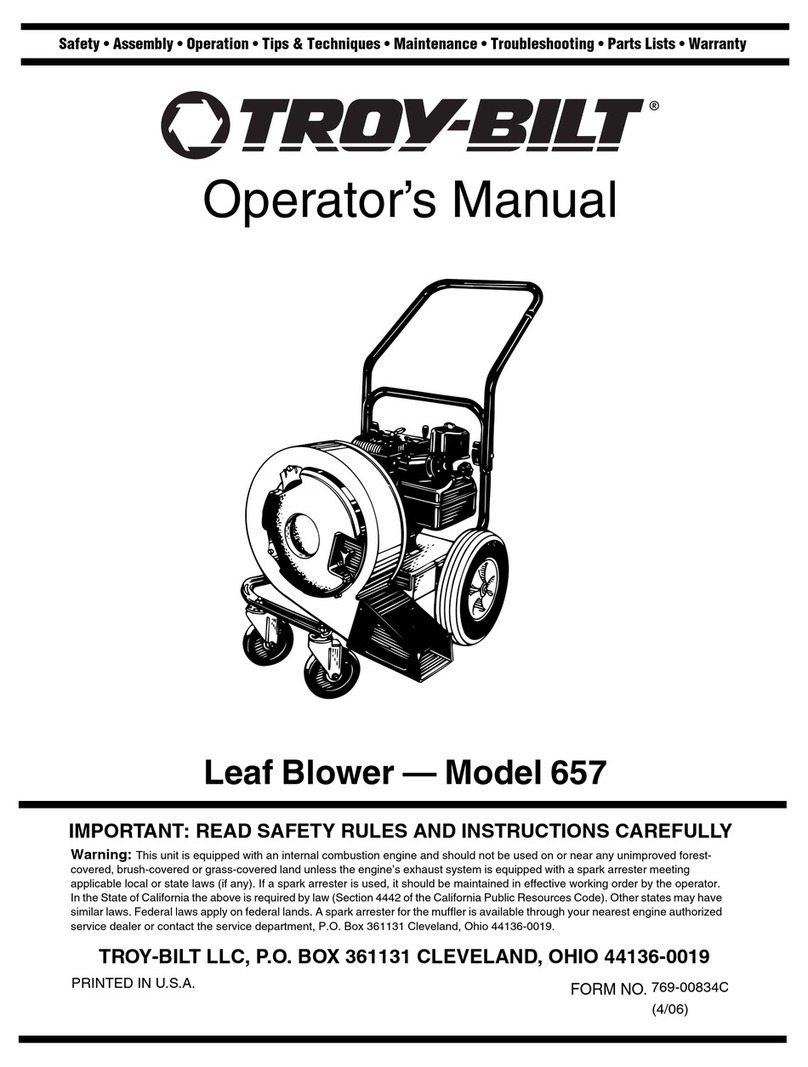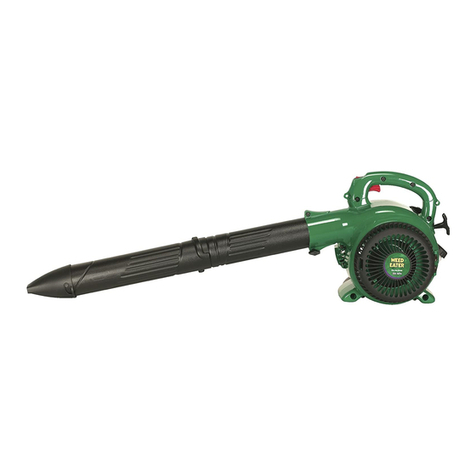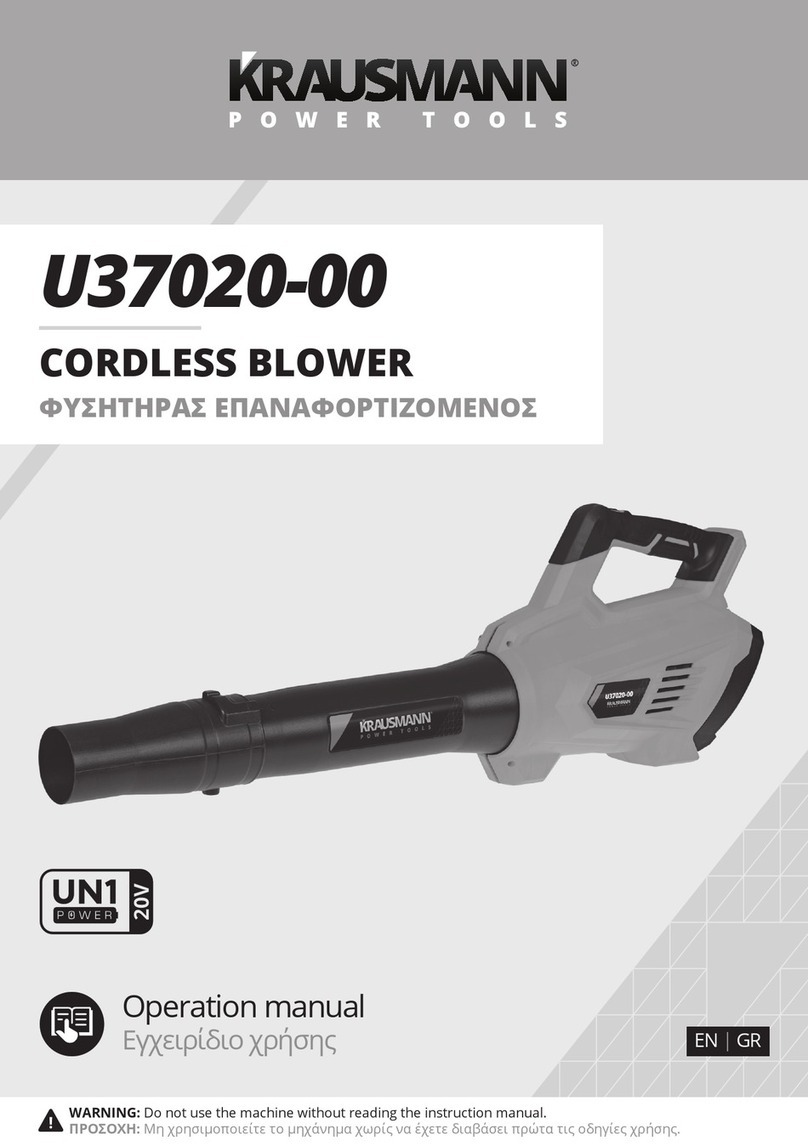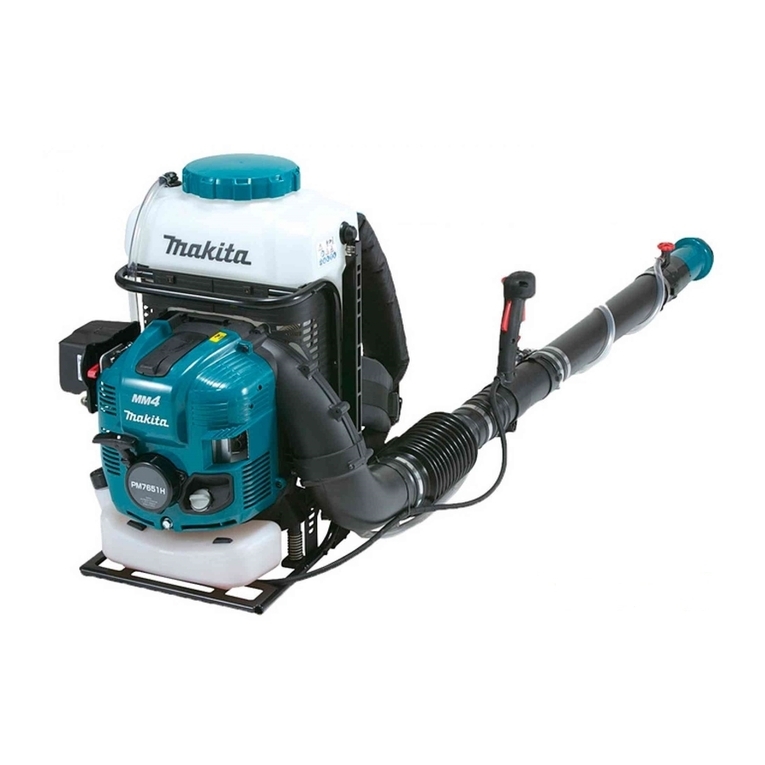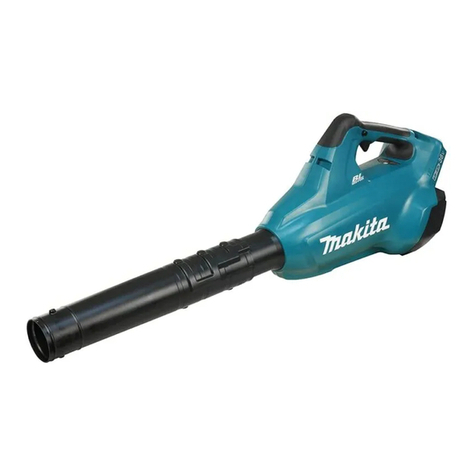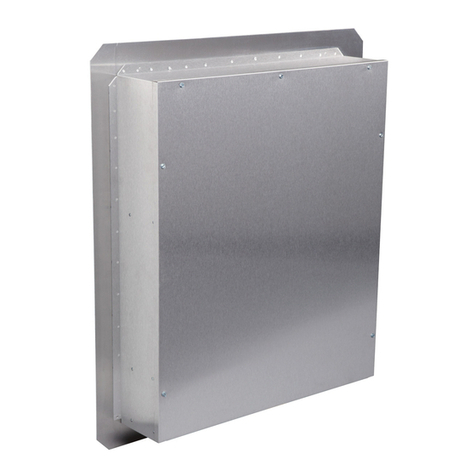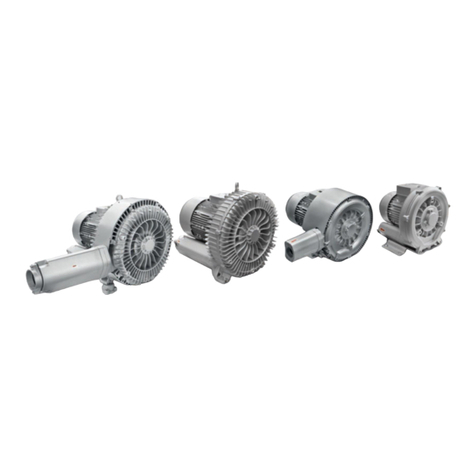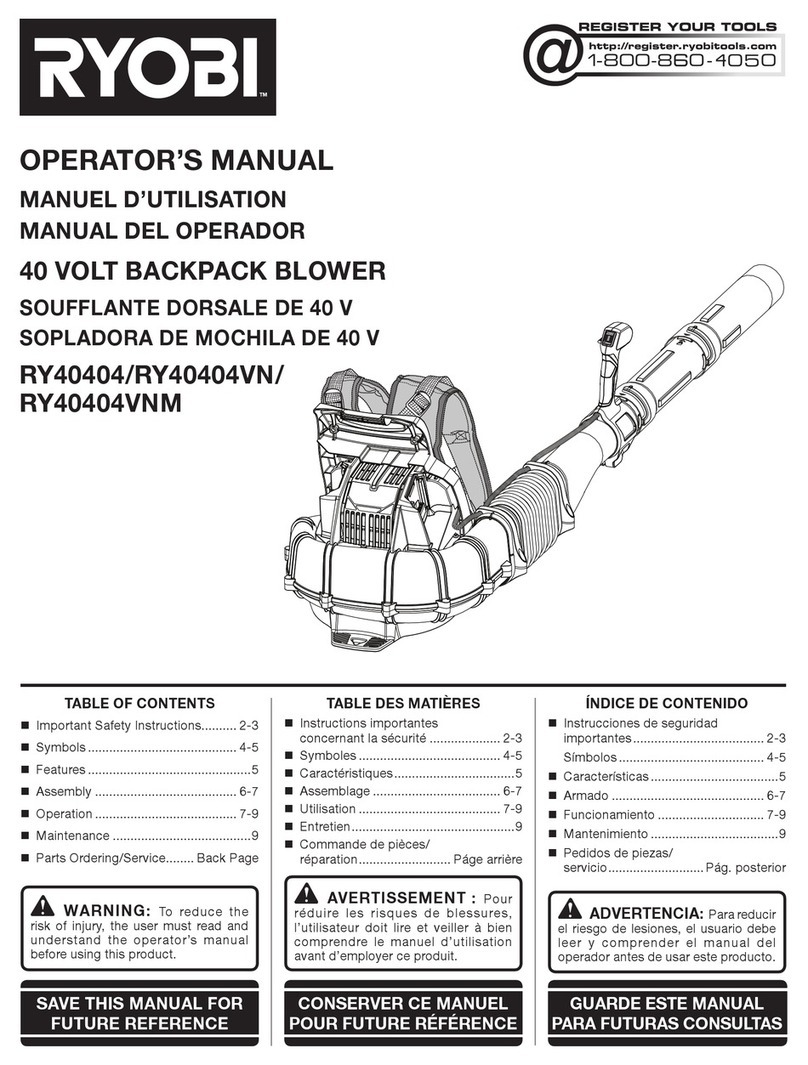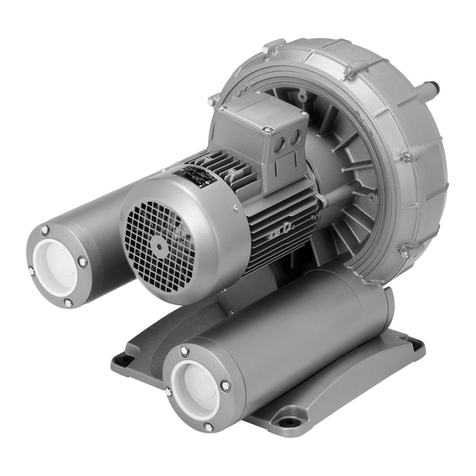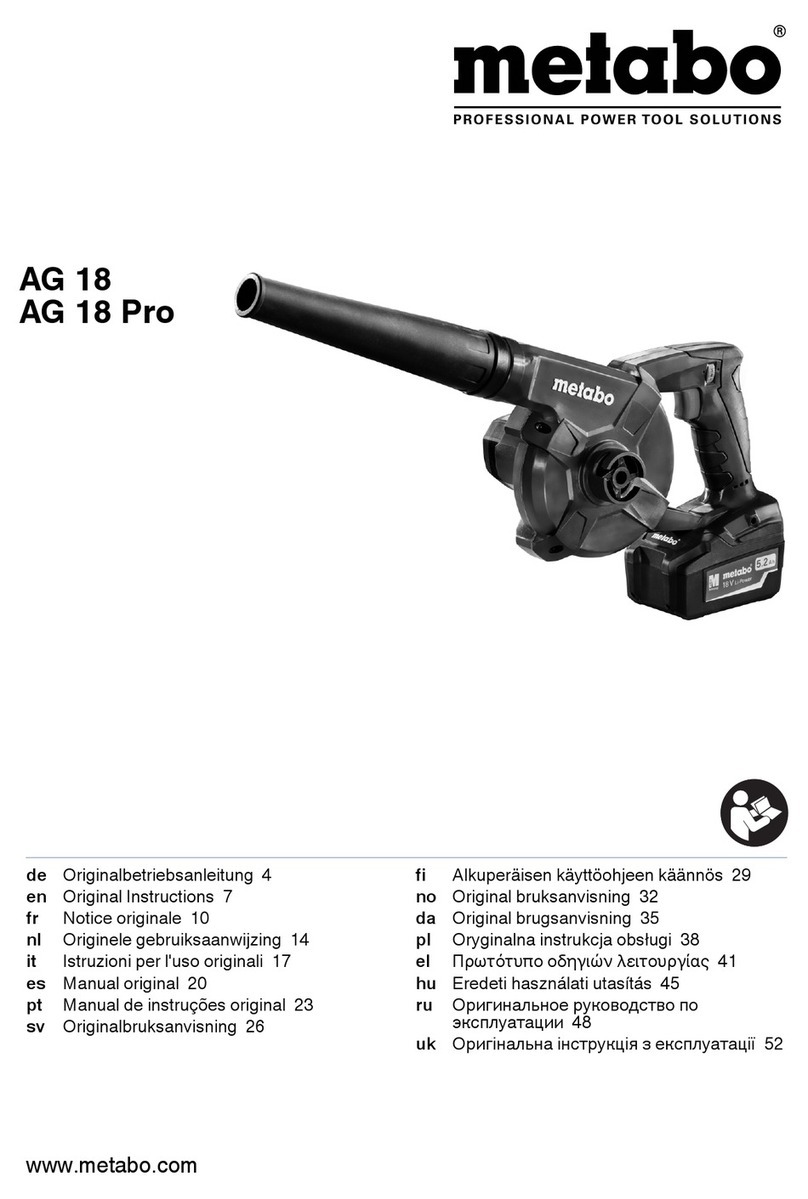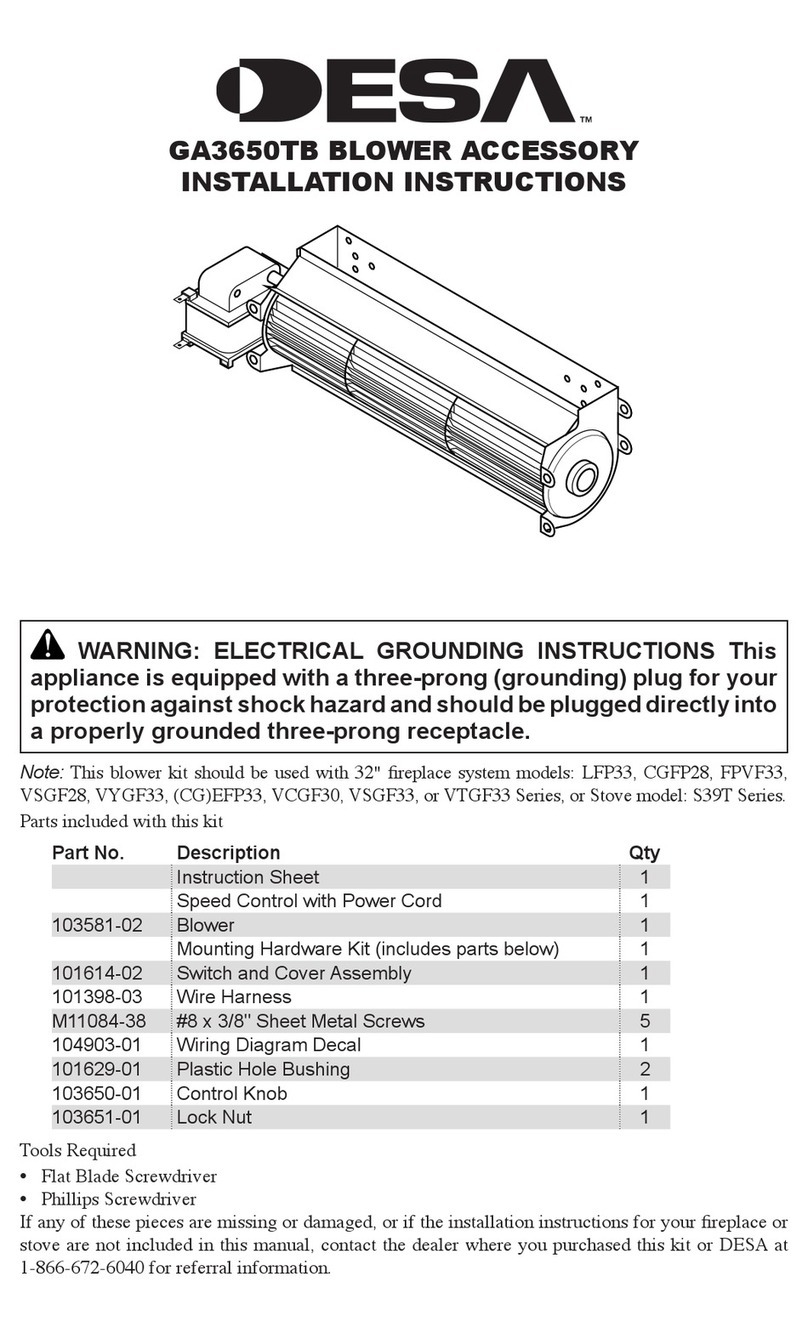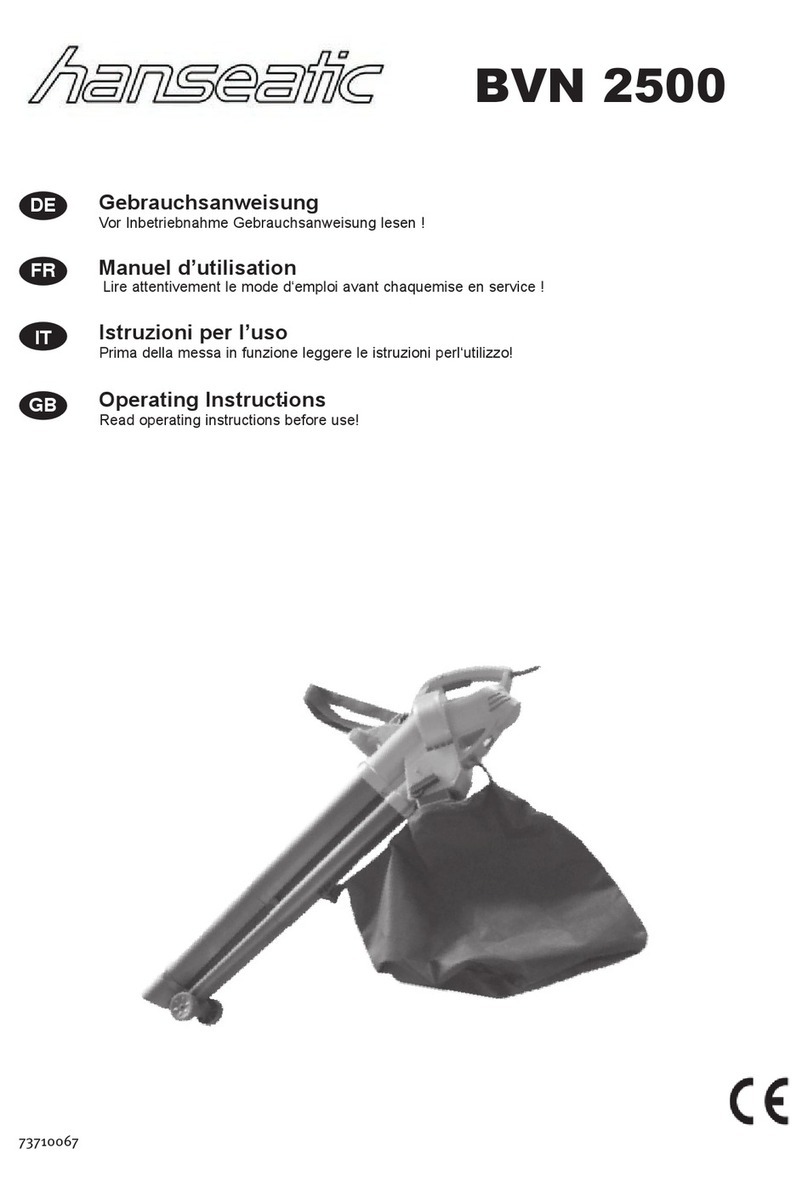
3ENGLISH
12. Do not use without dust bag in place when
collecting dust.
SAVE THESE
INSTRUCTIONS.
This appliance is intended for both household use and
commercial use.
Cordless Blower Safety
Instructions
Preparation
1. Always wear substantial footwear and long
trousers while operating the machine.
2. Do not wear loose clothing or jewellery that
can be drawn into the air inlet. Keep long hair
away from the air inlets.
3. Always use protective goggles, a cap and
mask when using the machine. Ordinary eye or
sun glasses are NOT safety glasses.
4. To prevent dust irritation the wearing of a face
mask is recommended.
5.
While operating the machine, always wear non-
slip and protective footwear. Non-skid, closed-toed
safety boots and shoes will reduce the risk of injury.
Operation
1. Never operate the machine while people, espe-
cially children, or pets are nearby.
2. Switch o the machine and remove the battery
cartridge and make sure that all moving parts
have come to a complete stop
• whenever you leave the machine.
• before clearing blockages.
• before checking, cleaning or working on
the machine.
• if the machine starts to vibrate
abnormally.
• whenever you convert the machine from
blower to vacuum, and vice versa.
3. Operate the machine only in daylight or in
good articial light.
4. Do not overreach and keep proper balance and
footing at all times.
5. Never blow debris in the direction of
bystanders.
6. Operate the machine in a recommended posi-
tion and on a rm surface.
7. Do not operate the machine at high places.
8. Never point the nozzle at anyone in the vicinity
when using the machine.
9. Never block suction inlet and/or blower outlet.
• Be careful not to block suction inlet or
blower outlet with dust or dirt when oper-
ating in dusty area.
• Do not use nozzles other than the nozzles
provided by Makita.
• Do not use the blower to inate balls,
rubber boat or the similar.
10. Do not operate the machine near open window,
etc.
11. Operating the machine only at reasonable
hours is recommended - not early in the
morning or late at night when people might be
disturbed.
12. Using rakes and brooms to loosen debris
before blowing is recommended.
13. If the machine strikes any foreign objects or
should start making any unusual noise or
vibration, immediately switch o the machine
to stop it. Remove the battery cartridge from
the machine and inspect the machine for
damage before restarting and operating the
machine. If the machine is damaged, ask
Makita Authorized Service Centers for repair.
14. Do not insert ngers or other objects into
suction inlet or blower outlet.
15. Prevent unintentional starting. Ensure the
switch is in the o-position before inserting
battery cartridge, picking up or carrying the
machine. Carrying the machine with your n-
ger on the switch or energizing the machine
that has the switch on invites accidents.
16. Never blow or vacuum dangerous materials,
such as nails, fragments of glass, or blades.
17. Do not operate the machine near ammable
materials.
18. Avoid operating the machine for a long time in
low temperature environment.
19. Always use the dust bag when collecting dust,
chips and the like.
20. Do not collect still smoldering cigarette ashes,
freshly cut metals shavings, screws, nails and
the like.
Maintenance and storage
1. Keep all nuts, bolts and screws tight to be sure
the machine is in safe working condition.
2. If the parts are worn or damaged, replace them
with parts provided by Makita.
3. Store the machine in a dry place out of the
reach of children.
4. When you stop the machine for inspection,
servicing, storage, or changing accessory,
switch o the machine and make sure that
all moving parts come to a complete stop,
and remove the battery cartridge. Cool down
the machine before making any work on the
machine. Maintain the machine with care and
keep it clean.
5. Always cool down the machine before storing.
6. When you lift the machine, be sure to bend
your knees and be careful not to hurt your
back.
Battery tool use and care
1. Prevent unintentional starting. Ensure the
switch is in the o-position before connecting
to battery pack, picking up or carrying the
machine. Carrying the machine with your nger
on the switch or energizing machine that have the
switch on invites accidents.
2. Disconnect the battery pack from the machine
before making any adjustments, changing
accessories, or storing machine. Such preven-
tive safety measures reduce the risk of starting the
machine accidentally.

